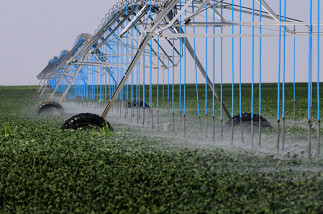
The use of an aquifer is projected to decrease by roughly fifty-percent t in the next 100 years.
A new study out of K-State finds that the over-tapping of the High Plain’s Aquifer’s groundwater beyond its recharge rate, peaked in 2006.
The findings were published by Civil Engineering professor David Steward, along with Civil Engineering doctoral student Andrew Allen in a recent Agricultural Water Management study Peak groundwater depletion in the High Plains Aquifer, projects from 1930 to 2110.
The study uses the past to examine the future, looking at High Plains Aquifer projects from 1930 to 2110.
“When we did the Kansas study, it really focused on those wells in Kansas that were depleting,” said Steward. “We came up with a set of projections that looked at how long the water would last and how the depletion process would play out over time. With this study, we wanted to learn how the depletion in various locations plays into a larger picture of the aquifer.”
Findings revealed that the High Plains Aquifer’s depletion followed a south to north progression.
Many states have already seen their peak, with Colorado projected to be next in line in 2023.

